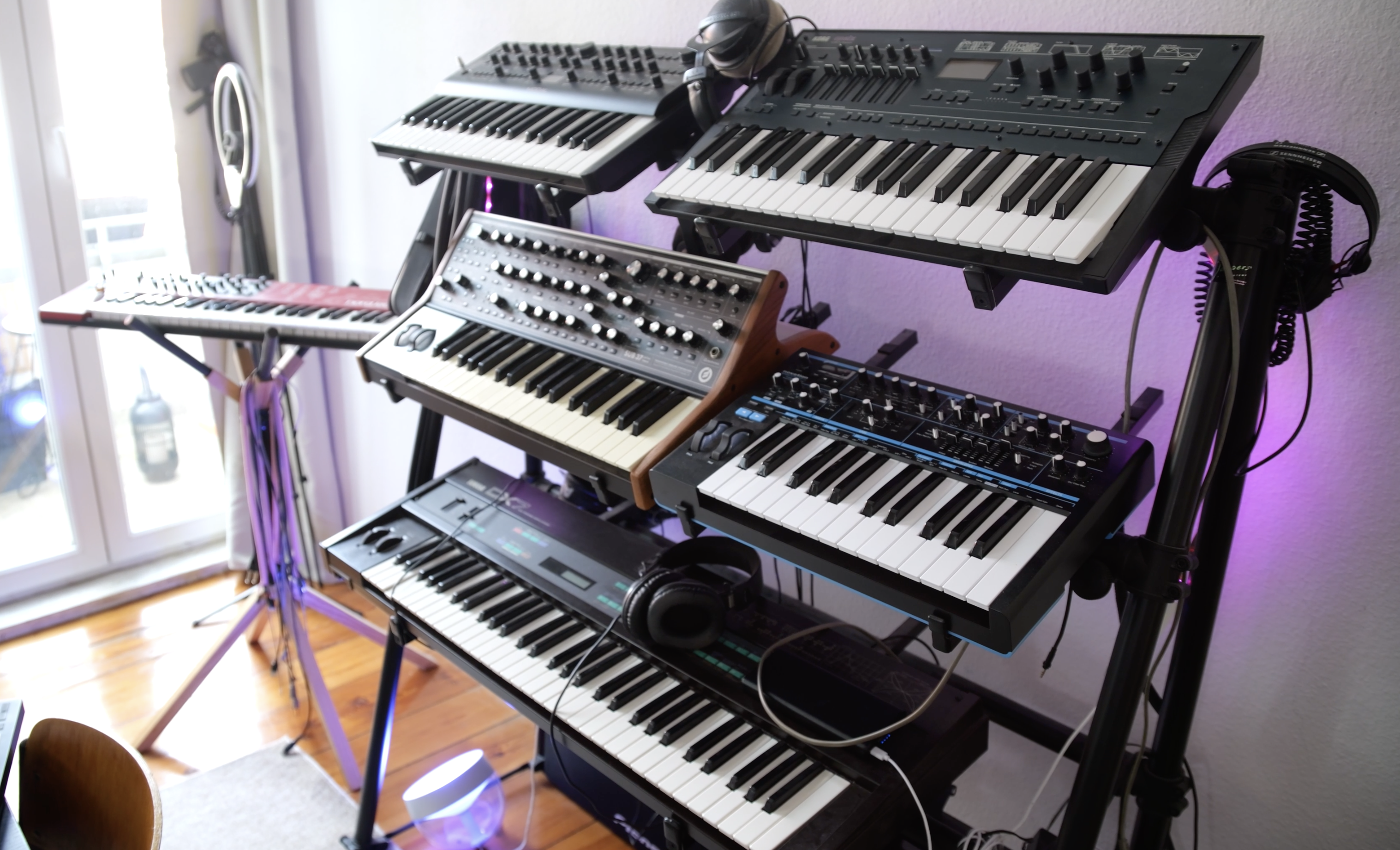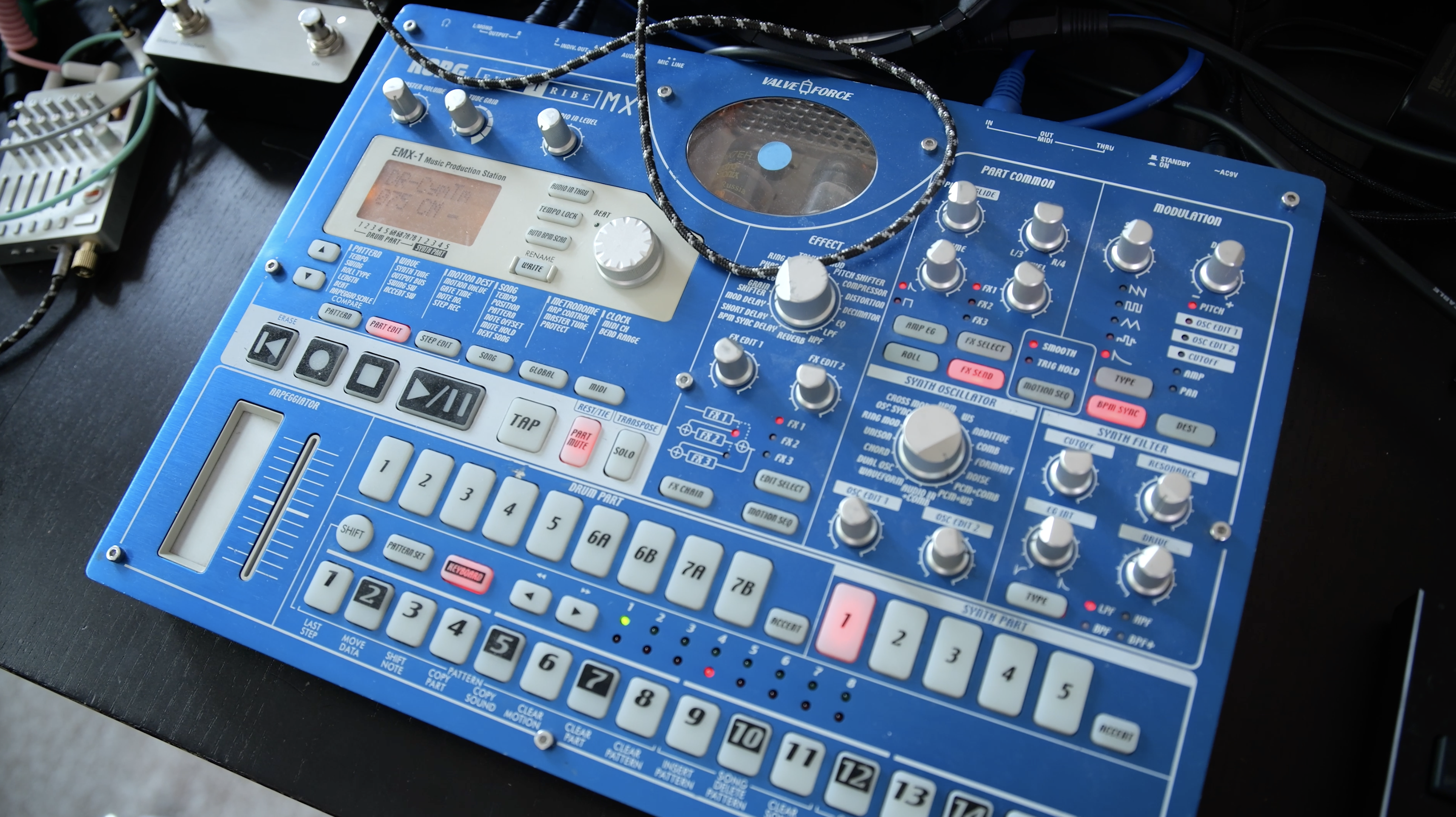"I like childlike exploration. Maybe it's a bit of ego, but it feels good to discover things": Tresor resident Nadia Struiwigh on why she avoids tutorials and keeps things 'loose' in the studio
"Every piece of gear has a character... it's like in a TV show, you have the main character, then you have other people that come in and out"

Born in Rotterdam but currently settled in Berlin, DJ and producer Nadia Struiwigh evidently thrives off of a sort of restless creativity.
Her tracks take in a whole variety of influences pulled from across dance music culture, from rugged techno through to glitchy IDM and synth-driven ambient. That eclectic approach has led to releases for the likes of Dekmantel and James Ruskin's Blueprint Records, as well as her current DJ residency at Berlin's famed club Tresor.
Taking a look around her studio, it’s not hard to see where this eclecticism comes from. Whereas some artists obviously gravitate to a specific way of making music, be that vintage synths, layered samples or in-the-box plugins, Struiwigh’s setup is an assemblage of electronic music making tools representing a multitude of eras and approaches.
Modern hardware synths fight for space with vintage keyboards and classic grooveboxes, joined by a small modular setup, some of which is patched in and ready to go, while other instruments are set aside in storage.
Despite the abundance of hardware, Struiwigh has no aversion to plugins either. “I'm gonna be honest,” she laughs, “sometimes I'm just lazy and I want to scroll through presets.”
This broad approach is very much by design. “I have so many different ways of working,” she says. “I don't believe in always using one kind of workflow. I think I have many.”
A table at the centre of Struiwigh’s studio acts as a sort of work bench, where she will focus on one or two instruments for whatever project she’s currently working on.
Want all the hottest music and gear news, reviews, deals, features and more, direct to your inbox? Sign up here.
“Every piece of gear has a character,” she tells us. “I wake up and I walk into this space, and I can be like, ‘Oh, I can use this today,’ and then I can swap things out. That's why everything is kind of loose on the table and not perfectly set up, like in some studios where you’ll see that everything is all ready and connected. That's not the case here.”
As well as being able to utilise the sound of different hardware instruments, this loose approach also lets Struiwigh approach music making with a sort of intentional, inquisitive naivety. It’s an attitude to making music that harks back to her earliest experiments with hardware.
“The creative part is a very feminine, intuitive feeling.”
“My first synth ever was the Doepfer Dark Energy,” she explains. “Someone from a store said to me, 'Nadia, you should really buy this. This is great for you'. I was like, 'Oh, no. How does this work?' This was years ago and I was not even aware of what synthesis was. I didn't know. It was literally just – here's a module, good luck, find your way.”
Although Struiwigh is clearly not short on technical knowledge – something evident in the fact she now teaches occasional production masterclasses – part of her approach to making music involves separating practical know-how from creative curiosity.
“The creative part is a very feminine, intuitive feeling,” she says. “It's literally like, I wake up, I have a feeling or I imagine something, and that is purely my soul speaking. There's no logic behind that.”
Part of that separation comes down to avoiding tutorials that focus too specifically on a specific workflow or piece of music making gear.
“[Tutorials] are often based on someone else's knowledge,” she says, “or they can come from the maker of a piece of gear. That directs you into a path that was already defined. I like to fail and create and learn.
“I like this kind of childlike exploration,” she continues. “You're like, ‘Oh my goodness, I discovered this myself. Maybe it's a little bit of ego, but it feels really good to discover things. That's the beauty of music, right?”

The downside to this mix and match approach to music making is that it can lead to a kind of studio hoarding. Although Struiwigh likes to switch between setups and workflows with each new project, she rarely abandons gear after using it, often finding that pulling something out of storage can provide fresh inspiration, further down the road.
“I'm really glued with all my pieces of gear,” she explains. “They have a very emotional touch for me. And that's probably why I would never really be able to sell things.
“I feel they all have character,” she continues. “It’s like in a film or TV show, you have the main character, and then you have other people that come in and out. That's how it works for me with gear.”

There is one piece of gear that remains central to Struiwigh’s workflow though – a consistent focal point that defines the sound of her more club-focused releases.
“My beloved one is the Korg Electribe [EMX-1],” she says. “I make almost every piece of danceable music with it. It's a very old piece of gear and I’ve been talking about it forever and ever – but I will not stop.”
Watch Struiwigh explain how she builds beats on the Electribe EMX-1 in the video below.
Nadia Struiwigh’s X-1 Phase EP is out now via Blueprint Records.
I'm the Managing Editor of Music Technology at MusicRadar and former Editor-in-Chief of Future Music, Computer Music and Electronic Musician. I've been messing around with music tech in various forms for over two decades. I've also spent the last 10 years forgetting how to play guitar. Find me in the chillout room at raves complaining that it's past my bedtime.
- Matt MullenTech Editor
You must confirm your public display name before commenting
Please logout and then login again, you will then be prompted to enter your display name.
